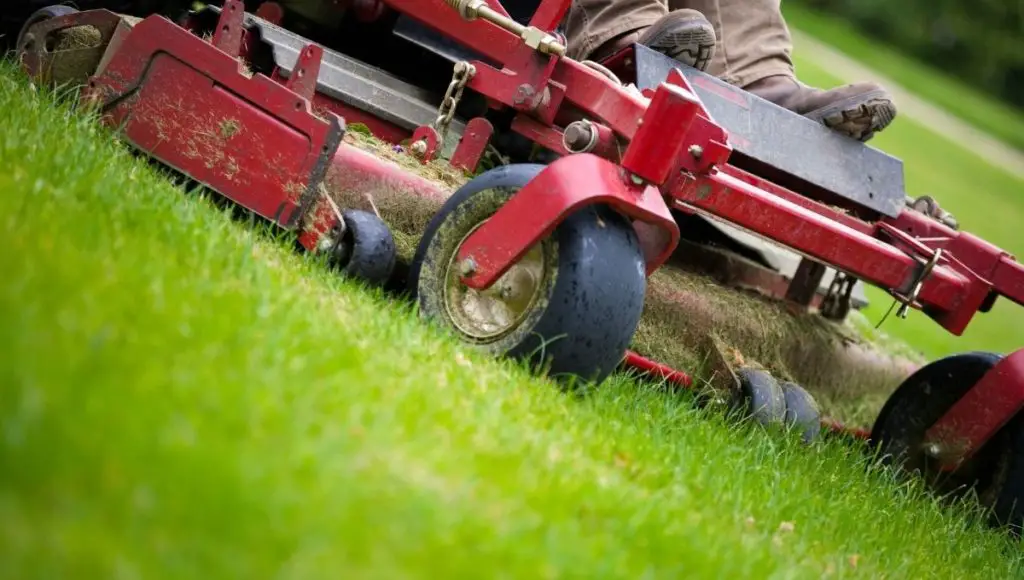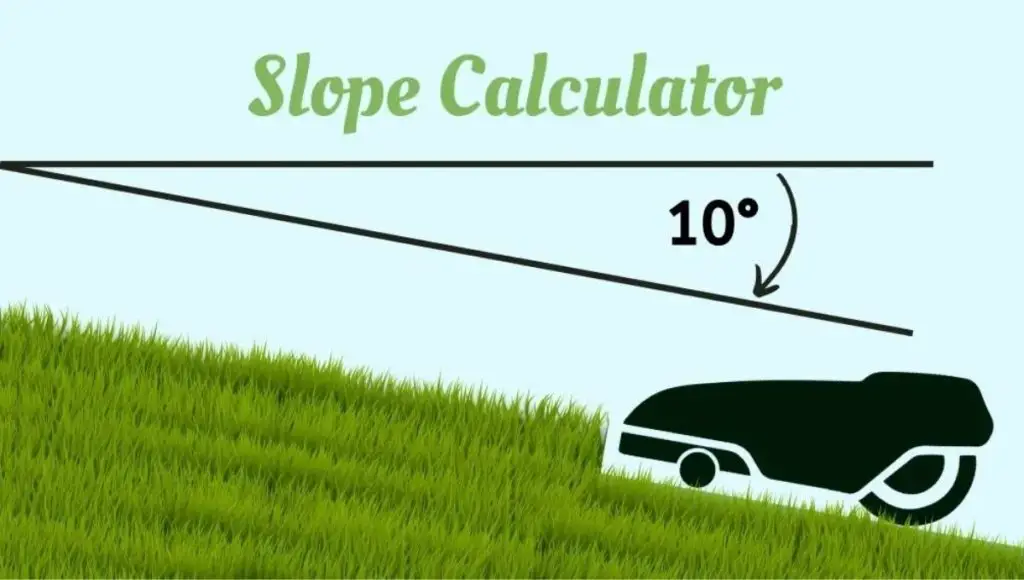Worried that your lawn is too sloped for a robot mower? When it comes to robot lawn mowers, one of the most important things to consider is the slope of your lawn. If your lawn is too sloped, the robot mower might not be able to move around properly and could end up getting stuck.
But don’t worry, we’ve got you covered. In this article, we’ll show you how to work out the slope of your lawn and some things to keep in mind when choosing a robot mower.
You may also like:
What does lawn slope mean?
A slope is a surface with one end at a higher elevation than the other. In other words, it’s a surface of which one end or side is at a higher level than another. The unit of a slope can be measured either as a percentage or an angle, expressed in degrees. Generally, the higher the slope value, the steep the terrain, and the lower the slope value, the flatter the terrain.

Angle of slope vs slope as a percentage
The angle of a slope and the percentage of a slope are two different parameters used to determine the steepness of a slope. Although they are calculated differently, they both tell us how steep a slope is. These two parameters are both calculated by dividing the rise of the slope by the run.
Percent of slope is calculated by dividing the rise by the run and multiplying the answer by 100. While the angle of the slope is determined by dividing the rise by the run and calculating the inverse tangent of the answer. The percent of a slope is expressed as a percentage (%), while the angle is expressed in degrees(o).
We will see some examples of these calculations later, after we determine how to measure the rise and run of a slope.
How do I calculate my slope
Calculating the slope of a given area of land follows very simple principles, and once you understand the basics, you will be able to do it without professional assistance. The first thing you have to know is that slope is measured by dividing the rise by the run. We already know that the rise is the elevation change, and the slope’s run is the horizontal distance covered.
Also, the run doesn’t mean the actual slope including the elevation change, but it refers to a flat, levelled horizontal distance between the highest point of the slope and the lowest point of the slope.
To measure the slope of your lawn, or the slope of your property, your first assignment is to find the rise and the run of your slope. Once you have these 2 values, you can crunch the numbers in a calculator to get the slope percentage or angle of your slope in degrees.
So, how do you find the rise and run of a slope?
Well, you have to do the measurements. Here I’ll do my best to break down how you can accurately measure the rise and run of a slope to enable you to make the correct calculations. First, we start by getting the tools you will need ready.

Tools required to measure slope
- 2 stakes of about 3 feet long, marked at 1-inch intervals to give a total of about 36 inches
- A hammer
- A string
- A spirit level
- Tape measure
- And finally, you may need an extra pair of hands.
Steps to measure your slope
Step 1: Calibrate the stakes
This step is actually optional, but calibrating your stakes will make it easier to take readings and align the strings. Use a measuring tape and a permanent marker to make ticks at 1-inch intervals on the stakes. Make them clear and easy to read.
Step 2: Drive the stakes into the ground
Locate the highest point of the slope and use your hammer to drive on stake into the ground. Make sure the stake goes about 6 to 10 inches into the ground to make it firm. Walk down to the lowest point of the slope and do the same thing, drive the second stake into the ground until it firmly stands on its own.
Step 3: Connect the stakes with the string
The next step is to connect the two stakes with a string to create a straight and levelled horizontal line between the top of the slope and the bottom of the slope. To do this, start from the stake at the highest point of the slope, tie the string around the top stake at ground level, stretch the string all the way to the stake at the bottom of the slope and tie it around the stake. To create the straight, levelled line, the string should be tied close to the top (or middle) of the second stake at the bottom of the slope.
Step 5: Make sure the string makes a straight horizontal line
It’s very important that you have a line that is straight and levelled, and this is where your spirit level comes in. Use the spirit level to measure to determine that your string line is straight. If the line is not straight, keep adjusting it until it becomes straight. This is where you may need an extra pair of hands for making small adjustments to the string while you hold the level. This particular step will likely take some time, so no need to rush. You want your measurements to be as accurate as possible, so take as much time as you need to ensure that you get it right.
Step 6: Take the measurements
Next, it’s time to take your measurements. Remember that you need to measure the rise and the run. Now, the slope’s rise is the elevation change of the slope, which will be taken from the stake at the bottom of the slope. The rise measurement is the distance between the ground and the point where you tied the string on the bottom stake. While the run (horizontal distance) is the length of the string between the 2 stakes.
- Rise = distance between the ground and the point where you tied the string on the bottom stake (or lowest stake).
- Run = length of the string between the top stake and bottom stake.
Remember that both measurements should have the same units.
Step 7: Calculate slope
Let’s assume that you measured your rise to be 5 ft or 60 inches. And you measured your run to be 25 ft or 300 inches. To calculate the percentage slope, you will have to do (rise ÷ run) x 100.
In this case, that would be (5 ft ÷ 25 ft) x 100 or (60 inches ÷ 300 inches) x 100.
(5 ÷ 25) x 100 = 20%
(60 ÷ 300) x 100 = 20%
Remember that it’s absolutely important that both measurements have the same unit, else, your calculations will be wrong.
To calculate the angle of the slope, you can do: 5 ÷ 25 = 0.2
tan-1(0.2) = 11.3 degrees
You can also use the inches’ measurement to get the same answer: 60 ÷ 300 = 0.2
tan-1(0.2) = 11.3 degrees

Final thoughts
A slope or gradient is the measure of steepness of a terrain or surface, and it can be expressed either as a percentage and as an angle in degrees. The easiest way of measuring slope may be by hiring a professional, but you can do it yourself with a little effort.
You just need wooden stakes, a hammer, string, a level, and a tape measure are what you need to determine the slope of your property. These tools and the simple instructions above can help you assess the rise and run of your lawn. Once you have these numbers, you can calculate the percent slope or angle of slope using the simple formulas above.

Emma Marie is a valued writer at the Little Robot Shop. She studied robotics and deeply understands technology, which shows in her writing. She consistently produces high-quality content, making her a perfect fit for the Little Robot Shop team.
While not writing, Emma works in a popular electronics retail chain. Emma also enjoys running and has two dogs with whom she loves spending time.
